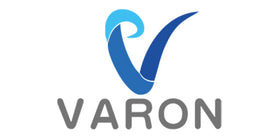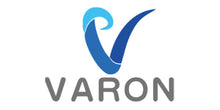Air Pollution and Lung Health: What Clean Air Day Teaches Us About Portable Oxygen Needs
CODE
Air pollution is one of the most pressing public health challenges of our time. It silently affects millions of people in the UK and around the world, leading to serious respiratory complications and worsening existing conditions such as asthma and chronic obstructive pulmonary disease (COPD). Lung Health is directly linked to the quality of the air we breathe, and every Clean Air Day reminds us of the importance of awareness and action.
As the need for respiratory support grows, the role of Light Oxygen Concentrators becomes increasingly essential. Devices like the VARON VP-1 Portable Oxygen Concentrator offer independence, mobility, and peace of mind for individuals whose lung health is vulnerable to pollution. This article explores the lessons Clean Air Day teaches us about air pollution, respiratory wellbeing, and why portable oxygen solutions such as Light Oxygen Concentrators are shaping the future of breathing support.
VARON VP-1 Pulse Portable Oxygen Concentrator | 24H Operation, CE-Approved
Understanding Air Pollution and Its Impact on Lungs
Air pollution contains a mixture of harmful substances, including fine particulate matter (PM2.5), nitrogen dioxide, ozone, carbon monoxide, and smoke. For healthy individuals, occasional exposure may only cause mild irritation. However, for those with compromised lung health, these pollutants can trigger severe breathing difficulties and long-term harm.
Short-term exposure to polluted air can lead to coughing, wheezing, tightness in the chest, and shortness of breath. Prolonged exposure, on the other hand, increases the risk of developing chronic conditions such as COPD, lung cancer, and worsening of asthma. Studies also show a link between poor lung health and higher susceptibility to infections, which became especially clear during the COVID-19 pandemic.
This is where Light Oxygen Concentrators play a crucial role. By delivering clean, concentrated oxygen, they help maintain stable oxygen levels even when the surrounding air is contaminated. For patients with chronic respiratory conditions, having portable oxygen on hand can mean the difference between independence and limitation.
Clean Air Day: Raising Awareness and Driving Action

Clean Air Day is the UK’s largest air pollution awareness campaign, organised annually to highlight the importance of clean air for healthier lives. It unites communities, healthcare professionals, and policymakers in encouraging actions that protect lung health, from reducing traffic emissions to promoting public transport and cycling.
Beyond public campaigns, Clean Air Day underscores a critical message: clean air benefits everyone, but especially vulnerable groups such as older adults, children, asthma patients, and those with chronic respiratory illnesses. It also demonstrates the value of personal protective measures, such as air purifiers, masks, and access to Light Oxygen Concentrators.
For individuals already managing fragile lung health, Clean Air Day becomes not just a call for systemic change but also a reminder to adopt practical solutions that safeguard daily breathing.
Who Needs Portable Oxygen in Polluted Environments
Not everyone exposed to pollution requires oxygen therapy, but certain groups benefit significantly from Light Oxygen Concentrators. Patients with COPD, asthma, pulmonary fibrosis, interstitial lung disease, and post-COVID recovery often struggle with reduced lung capacity. During pollution spikes—whether from heavy urban traffic, smog episodes, or wildfires—oxygen needs rise sharply.
Imagine commuting to work during rush hour in central London, where nitrogen dioxide levels peak, or walking outdoors on a hot summer day when ozone levels are high. For vulnerable individuals, these everyday situations can trigger dangerous breathlessness. Having a device like the VARON VP-1 Portable Oxygen Concentrator ensures their lung health is supported wherever they go.
These concentrators are not just for clinical emergencies. They allow patients to shop, exercise lightly, travel, or enjoy family outings with confidence, knowing their oxygen needs are covered even in polluted environments.
How Portable Oxygen Supports Health and Mobility

Traditional oxygen tanks have long been used for supplemental oxygen, but they are heavy, require regular refilling, and restrict mobility. By contrast, Light Oxygen Concentrators generate oxygen on demand from ambient air, making them safer, more convenient, and far more practical for daily life.
The VARON VP-1 Portable Oxygen Concentrator exemplifies this shift. Weighing just 6.5 lbs, it offers pulse flow oxygen delivery tailored to the user’s breathing pattern, with flow rates ranging from 1–5L/min and an oxygen concentration of 93% ±3%. This ensures efficient oxygen delivery while conserving energy and extending battery life.
Its intelligent touchscreen interface simplifies use, while safety features like oxygen purity monitoring and temperature alerts provide reassurance. For patients concerned about their lung health, this combination of portability, reliability, and advanced design translates to freedom and peace of mind.
Clean Air Day Lessons: Prevention and Protection
One of the most powerful lessons from Clean Air Day is that prevention matters as much as treatment. Protecting lung health requires both systemic change—such as reducing emissions—and personal responsibility. Simple measures like avoiding outdoor activity during peak pollution hours, using high-efficiency air purifiers indoors, and wearing protective masks can make a difference.
For patients, however, the availability of Light Oxygen Concentrators provides an extra layer of protection. They serve not only as medical devices but also as proactive tools that allow individuals to continue living actively and independently despite environmental challenges.
In other words, portable oxygen is both a therapy and a shield—a way to ensure good lung health while navigating an imperfect world.
Choosing the Right Portable Oxygen Device

Selecting the right oxygen concentrator depends on flow settings, portability, noise levels, and ease of use. For many patients, the VARON VP-1 Portable Oxygen Concentrator strikes the right balance. It offers CE-approved reliability, lightweight design, long-lasting performance, and a user-friendly interface.
With features such as a car adapter, backpack, timer function, and real-time monitoring, the VP-1 is more than just a medical device. It is a lifestyle solution for those who want to breathe freely, travel with confidence, and protect their lung health.
Varon’s dedication to quality and patient satisfaction explains why the brand has won market favour. Its commitment to innovation and user-friendly design ensures that patients do not just survive, but thrive, while using Light Oxygen Concentrators.
Key Takeaways
-
Clean Air Day highlights the dangers of pollution and its impact on lung health.
-
Light Oxygen Concentrators provide essential support for vulnerable individuals, offering mobility and protection in polluted environments.
-
The VARON VP-1 Portable Oxygen Concentrator combines lightweight design, safety features, and 24-hour operation to support everyday independence.
-
Prevention is key—alongside oxygen therapy, lifestyle adjustments can safeguard lung health.
-
Readers can enjoy extra value with a special discount: use the code VARON10 when purchasing VARON devices.
Conclusion
Air pollution continues to challenge our collective wellbeing, making campaigns like Clean Air Day more important than ever. They remind us that protecting lung health is a shared responsibility—one that involves both cleaner communities and personal protective measures.
For those living with chronic respiratory conditions, Light Oxygen Concentrators like the VARON VP-1 offer not only therapy but also the freedom to live fully and independently. By combining awareness with technology, patients can breathe easier, travel with confidence, and face pollution with resilience.
With tools like the VP-1, and with greater societal efforts to improve air quality, we can look forward to a future where clean air and strong lung health are not privileges, but universal rights.



























